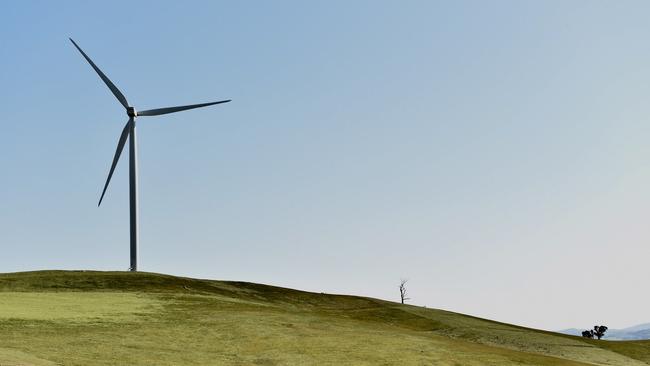Power bill threat as renewable energy spending plummets
Congestion woes in Australia’s power grid threaten to hike power bills and derail the ability to achieve deeper carbon cuts.

Congestion woes in Australia’s power grid threaten to hike household electricity bills and derail the nation’s ability to achieve deeper cuts to carbon emissions following a collapse in renewable energy spending, Queensland government-owned investment giant QIC has warned.
The number of committed new energy projects has plummeted by 95 per cent in the 2020 financial year as sections of the nation’s stretched power system struggle to handle major new renewable generation sources in areas without sufficient transmission capacity.
Just 151 megawatts of new generation is committed in the current financial year from two projects, compared with 4300MW across 46 plants in the 2019 financial year.
Australia requires at least 30,000MW of solar and wind to replace coal generation by 2040, and 47,000MW should more aggressive pollution cuts be required in response to the climate change crisis.
Transmission bottlenecks mean clean energy project developers face losing up to a quarter of their revenue under calculations that measure how much electricity is lost over powerlines, with renewable plants in remote locations particularly hard hit.
QIC, whose clients include Australia’s largest superannuation funds controlling $730bn of retirement savings, has joined global financiers in warning that the country’s pipeline of renewable generation projects faces gridlock as concerns over transmission losses cut billions in investment.
The knock-on effect of the investment freeze would result in higher energy bills and “impede achievement” of Australia’s emission reduction target — which Scott Morrison has vowed to deepen after the bushfires — cautioned QIC, which counts the Future Fund among its renewable partners.
“The reduction in new renewable projects, and dearth of new capital available for new renewable projects, is impacting the market. This is occurring at precisely the time when significant investment is required to replace an ageing thermal fleet and secure Australia’s future renewable energy supply,” QIC’s global infrastructure head, Ross Israel said, in a letter to the Australian Energy Market Commission.
The Queensland fund is among investors and project developers pushing for what it sees as a fairer way of calculating marginal loss factors for transmission on an average basis, smoothing volatility in the grid and paving the way for an accelerating move to renewables from coal plants.
The system gridlock has arrived at an awkward time for the industry, investors and government alike. The Coalition’s plan to seek more ambitious cuts to Australia’s carbon emissions relies on a doubling of renewable energy in the electricity grid within 10 years, exceeding 50 per cent by 2030 from 23 per cent under the 2020 Renewable Energy Target.
An investment freeze places that target in jeopardy, with large-scale spending on solar and wind falling by 57 per cent to $US2.8bn in 2019, figures from Bloomberg New Energy Finance show.
The spending decline led QIC to warn the AEMC, the national energy rule-maker, that it now ranked renewables as a higher risk investment than other infrastructure projects. “This increase in risk, due to higher cashflow volatility and lower regulatory certainty, is directly increasing the cost of equity capital and reducing the availability of debt capital, which is also increasing given the perception of higher default risk,” Mr Israel said.
A major investor group including Blackrock, Macquarie and UK developer John Laing said retaining current regulations would lead to higher power prices by boosting the cost of new generation projects, resulting in an “investment moratorium” as renewable projects were put on ice.
“An immediate response is necessary to ensure investment is efficiently priced, new generation projects are located in parts of the network with the highest resource intensity and to mitigate higher risk premiums so as to avoid an investment strike or moratorium,” Clean Energy Investor Group chair Rob Grant said in the consortium’s submission.
The AEMC is due to make a final ruling on the marginal loss factors issue by February 27.

